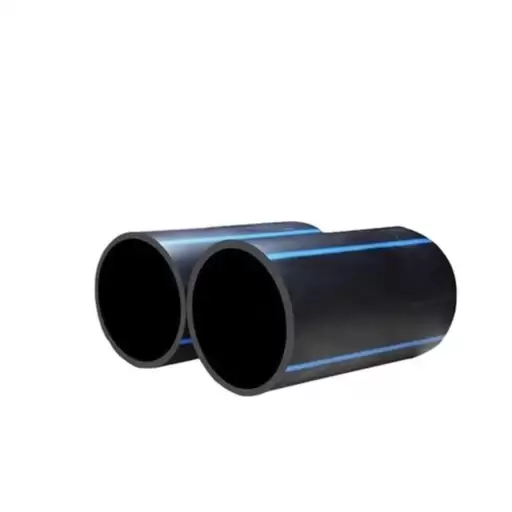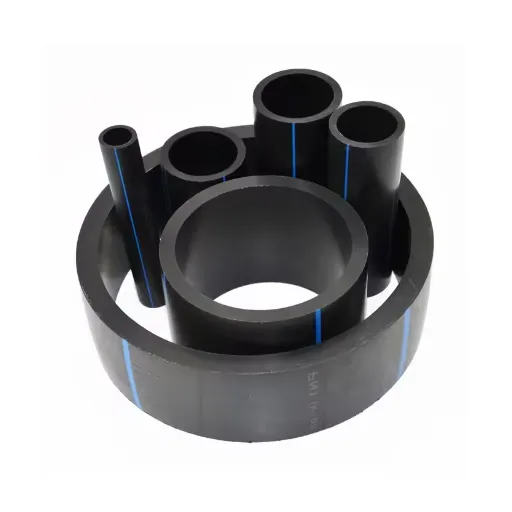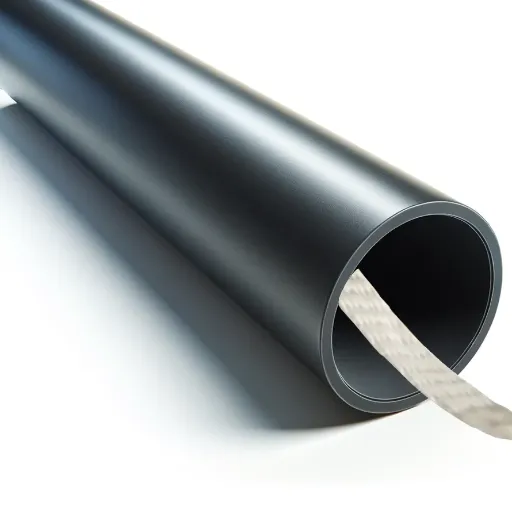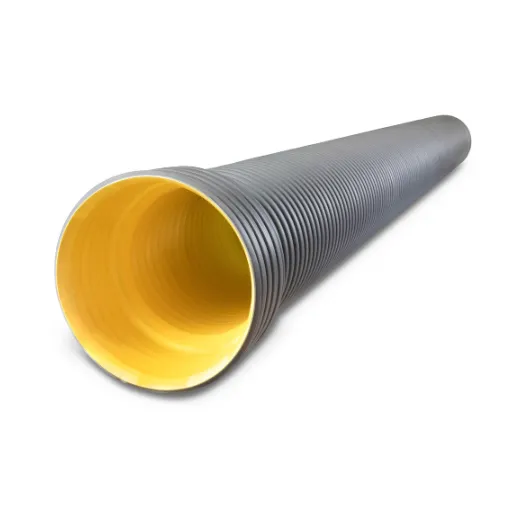When it comes to selecting the right piping material for your project, understanding the differences between PVC (Polyvinyl Chloride) and HDPE (High-Density Polyethylene) pipes is crucial. Both materials are commonly used in a variety of applications, from municipal water systems to industrial infrastructure, but each offers unique advantages, limitations, and performance characteristics. Choosing the right option requires a detailed evaluation of factors such as durability, cost-effectiveness, environmental resistance, and installation requirements. This article will provide a comprehensive comparison of PVC and HDPE pipes, equipping you with the knowledge to make an informed, confident decision tailored to the specific demands of your project.
Material Properties of PVC and HDPE
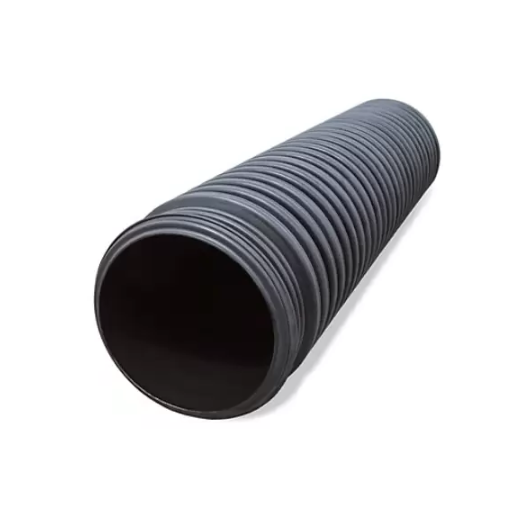
Flexibility and Strength
On the other hand, PVC and HDPE are quite different in flexibility and strength, and hence they are suited for different purposes. PVC is known to be rigid and offers structural integrity where support is required, long-term stability is needed, and deformation under load is not desirable. Still, this feature of stiffness presents particular disadvantages in performance where flexibility is desired.
HDPE is flexible and resilient, able to incorporate significant amounts of bending, shifting, and pressure without cracking or breaking. This makes HDPE a preferred material for installation on uneven grounds, seismic areas, or any area subjected to ground movement. It is also resistant to impact, making it well suited for bad situations compared with the brittleness posed by PVC.
The strength of these two materials is more dependent on the areas and applications. In fixed conditions, PVC has a high tensile strength, whereas HDPE excels in situations where flexibility is paramount. It is thus imperatively recommended to assess carefully the pipe materials under consideration with respect to specific requirements of the project, such as expected stress, environmental factors, and load anticipated.
Chemical Resistance
When PVC and HDPE pipes are considered from the angle of chemical resistance, different characteristics are offered by each and therefore make them suitable for different applications depending on the chemicals that might be encountered. PVC resists a wide range of acids, alkalis, salts, and some types of alcohol. Nevertheless, it is really poorly resistant against particular organic solvents like ketones, ethers, and aromatic compounds that slowly cause degradation with time. Compatibility is dependent on specifics such as concentration, temperature, and duration of contact.
In contrast, HDPE is considered to possess the best resistance against chemicals. It is highly resistant to aggressive chemical agents, stronger acids, bases, and some hydrocarbons, more so than that of PVC. Thus, it could be observed that HDPE can tolerate harsher environments even more than PVC, such as industrial and wastewater systems, given its lower permeability to chemicals and lower possibility of stress cracking under chemical exposure. This, to a large extent, renders HDPE as the more desired material in instances where long-term exposure to aggressive chemicals is a concern.
The compatibility of a specific chemical with the material should be considered when chemical handling is a matter of concern. One should refer to relevant standards as well as chemical resistance charts from the manufacturers to further ensure appropriate material selection. While PVC might be capable of handling the less demanding chemical exposure, HDPE brings to the table broader compatibility and enhanced resistance under difficult conditions, thus making it more suitable for environments featuring aggressive chemicals with diverse profiles.
Weight and Handling
From the standpoints of weight and handling of the materials, these factors play a critical role in determining their suitability for different applications. Being lighter than many alternative materials, such as metals or reinforced polymers, HDPE supports ease of transportation and installation. Because of its lightweight nature, there is a requirement for fewer laborers during installation, and usually, it is installed without heavy machinery. This factor could enhance cost efficiency when handling large-scale projects where material logistics is a prominent consideration.
Despite its being lightweight, HDPE boasts an impressive strength-to-weight ratio that confers durability without adding bulk. In respect of handling, HDPE possesses an even better advantage over PVC materials in terms of flexibility. The pipes of HDPE are unlikely to crack when faced with impact or pressure due to their inherent flexibility; hence, they are safer to handle while being fitted in construction or assembly operations. This very property of carrying a very low weight yet having high resilience marks HDPE’s capability of tolerating situations ranging from highly controlled works to unpredictable ones.
Due to the low density of HDPE, storage and transportation considerations are much easier. This characteristic directly contrasts with larger or stiffer materials that are manufactured to take up less space when coiled, thus less HDPE can be shipped at a time. Such improved handling capabilities indicate that HDPE is both a practicable option for technically demanding work site areas and an economic one for operations needing fast mobilization and upgradeability.
Durability and Lifespan of Pipes
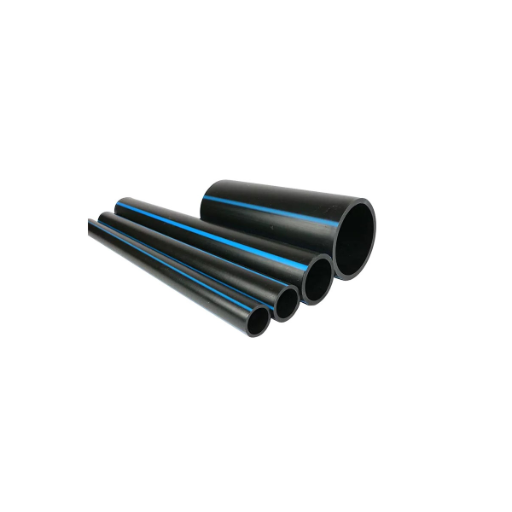
Performance Under Various Conditions
High-density polyethylene (HDPE) pipes are outstanding in terms of performance, standing out in a large number of industries that range across various environmental and operational conditions. Because of their strong chemical resistance properties, the pipes can withstand extreme temperatures, pressure, and aggressive chemical exposure without compromising their structural integrity. For example, HDPE ideally tolerates a temperature range of -40°F to 140°F so that it may function in both arctic and desert conditions.
In addition to this, HDPE pipe is highly resistant to corrosive agents such as salts, acids, and alkalies, thus ensuring the product’s long durability life in industrial or wastewater installations. HDPE also exhibits very low permeability, which keeps corrosion at bay and prevents any leakage in situations where materials could become abrasive or under extremely high velocities. Studies have shown that the pipes provide service longevity of more than 50 years in favorable installation and working conditions, thus presenting a great economic advantage.
Another advantage of HDPE is that it carries extreme resilience when considering dynamic environmental conditions such as earthquakes or differential soil movement. Flexible deformability with ground movement and thermal expansion minimizes the possibility of the formation of cracks or failure of the joints. This feature, coupled with very superior manufacturing facilities and quality control measures, assures the reliability of HDPE pipes in all sectors, including agriculture, mining, utilities, and large infrastructure. Increased usage of HDPE is testimony to its indispensability in modern-day engineering standards.
Impact of Climate on Durability
Climate conditions greatly influence HDPE pipes’ durability because they affect the performance of the pipe under varying environmental conditions. HDPE pipes are made to withstand an array of challenging climatic situations; however, some conditions may hasten the deterioration or pose other challenges.
- UV Radiation: The exposure of HDPE to ultraviolet radiation from sunlight can cause surface degradation. Photo-oxidation may reduce the mechanical strength of the pipe with time. But carbon black or UV stabilizers working within the polymer matrix can protect the pipes from sunlight.
- Thermal Stresses Due To Rapid Fluctuations Of Temperature: Rapid thermal changes imposed upon HDPE pipes cause expansion and contraction within the pipeline. These thermal cycles may stress the system at the joints and connection points, with the possibility of causing fatigue of materials. Being an extremely elastic material with thermal flexibility, HDPE can readily absorb the stresses imposed upon it without any straining.
- Brittleness at Low Temperatures: At sub-zero temperatures, the HDPE material becomes stiff and prone to impact damage. Pipes installed in very cold climates or at high altitudes are prone to this hazard. Advanced HDPE grades have addressed this danger by increasing the grades to work temperature as low as -40°F (-40°C).
- High Ambient Temperatures: High heat accelerates the oxidation of HDPE, causing the polymer to soften and reduce in tensile strength. High-performance HDPE grades, however, resist heat-aging much better, as they employ antioxidant additives and ensure durability in the longer run.
- Moisture and Humidity: Prolonged exposure to moisture and high humidity can cause microbial growth on the pipe surface or within the pipeline. The pipes are corrosion-resistant, but in moist climates, an additional anti-corrosion measure will make the system more durable in the long run.
By treating these climatic stressors through advanced material engineering and adequate maintenance, HDPE pipes have, almost indifferent to the environment, going to developed their reputation for reliability and efficiency.
Long-term Longevity of PVC vs HDPE
Owing to their flexibility and resistance to UV, chemicals, and extreme temperatures, HDPE pipes are considered to have a far longer lifespan, whereas the PVC pipes are subjected to brittleness upon environmental stresses and are subsequently rendered less durable.
|
Aspect |
PVC |
HDPE |
|---|---|---|
|
Strength |
Brittle, cracks easily |
Flexible, crack-resistant |
|
Sunlight Tolerance |
Low |
High |
|
Chemical Tolerance |
Moderate |
High |
|
Heat Range |
Narrow (-40°F to 140°F) |
Wide (-40°F to 140°F) |
|
Pressure Capacity |
Lower |
Higher |
|
Stress Endurance |
Low |
High |
|
Setup Ease |
Rigid, less flexible |
Flexible, trenchless |
|
Service Life |
Shorter |
Over 100 years |
Cost Analysis: PVC vs HDPE
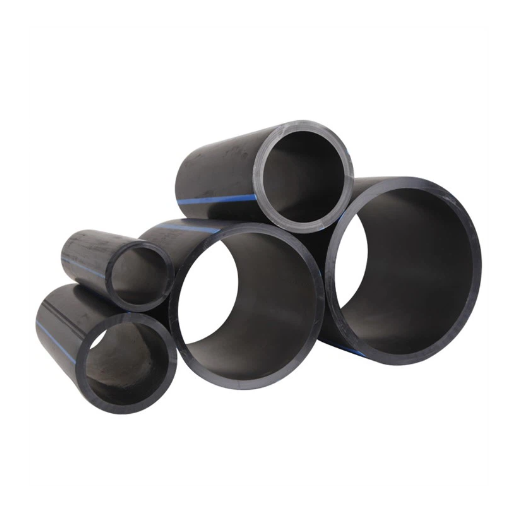
Initial Cost Comparisons
When the initial costs of PVC and HDPE piping systems are compared, it is apparent that PVC, generally speaking, has a lower upfront material cost. PVC, by having a simpler production process, has lower manufacturing costs and easily available raw materials. PVC pipes are suited for cost-sensitive applications where budget constraints are severe, especially in residential plumbing and very light-weight irrigation applications. Due to its cheap nature, it is a less popular choice of piping for projects that require high durability and superior performance traits.
Another positive trait of HDPE pipes, even though they are high in initial costs, is that the long-term benefits end up being reflected in the price of their excellent properties. The production of HDPE is more advanced technologically, to the extent of giving it an edge in flexibility properties that resist chemicals and stress. These properties are taken into account where the HDPE requirements are quite demanding, including industrial piping, pressure piping, and trenchless installation. Then initially, the higher cost of HDPE is set off against its lower maintenance, longer life, and exceptional performance under loads and environmental conditions.
In the beginning, one may see PVC as being less expensive, but when considering long-term costs: maintenance, failure in performance, and eventual replacement costs, there is another dimension. HDPE piping, withstanding the most extreme conditions and with a proven service life of far over 100 years, probably comes off with lesser life cycle costs. Infrastructure planners and project engineers may, therefore, be forced to choose between solving the problem of current budget constraints and postponing possible future expenditures, which will, in turn, render their project more expensive.
Long-term Value and Maintenance Costs
When discussing the long-term potential and maintenance cost of any infrastructure material, it becomes apparent that durability, waxing and waning under environmental stresses, and service life are of utmost importance. HDPE piping, being non-corrosive, has been observed to resist chemical attacks and temperature changes, endowing it with a considerable comparative advantage in this regard. Research has shown that HDPE pipes can maintain their structural integrity for well over a century if laid under suitable conditions, thus presenting a worthy return on investment over time.
Another big factor to consider is maintenance expenses. These services are driven down with the installation of HDPE piping due to its lower chances of leaks, cracking, or scaling. Additionally, the use of newer manufacturing processes and installation techniques, such as trenchless installation, continues to promote limited disruptions and low labor expenses. Industry analysis states that lifecycle assessments reveal HDPE piping systems provide upfront advantages in alleviating recurring maintenance costs and resource consumption, thereby fulfilling sustainability objectives when compared to materials such as metals or concrete.
The data, therefore, emphasizes the value of engineering decisions made for the long-term benefit as opposed to an obvious front-end saving. Through embracing an option such as HDPE, the project stakeholders will guarantee that their solution pays off in reliability, cost efficiency, and vastly diminished carbon footprint across the lifespan of the infrastructure operation.
Cost-Effectiveness in Different Applications
High-Density Polyethylene happens to be such an extremely versatile material, offering a wide range of cost-effective applications, given that it has good longevity, less maintenance, and is a lightweight material. Below are the five major instances in which there is a great use of HDPE, with detailed insights into performance:
- Municipal Water Systems: HDPE pipes are widely used as piping materials in the water distribution sector of municipal works owing to their corrosion resistance and suitability for bending. Research studies establish that if used under normal operating conditions, HDPE piping systems can last for over 100 years, bringing with them a significant advantage in terms of the ost of replacement. HDPE piping systems can, therefore, reduce life cycle costs of as much as 25% compared to more conventional metallic ones of ductile iron or PVC.
- Industrial Piping Solutions: The chemical processing and mining industries derive benefits from HDPE’s resistance to chemicals and tolerance to abrasions. From the point of view of the industrial plants, HDPE acts as an efficient and effective barrier against the hostile environment, thereby minimizing times of downtime and repair costs. Plus, the lighter weight of HDPE reduces about 30% of the transportation and installation costs when compared to steel pipelines.
- Irrigation Systems: In agriculture, HDPE is used for pipe systems that require durability and fencing systems with leak-free connections. Because water loss using HDPE irrigation systems is around 20%, water utility bills could constitute a significant cost to farmers in the long run. Ease of installation also keeps labor costs down.
- Landfill Liners and Covers: HDPE geomembranes are a part of landfill machinery that provides long-term protection against leachate leakage. It has been shown that HDPE membranes can hold on to structural integrity for more than fifty years in landfill environments. This implies less frequent replacements and, hence, around 15% cost savings in comparison to other liner materials.
- Energy Transmission Systems: It finds extensive application as a conduit in power and telecommunication cables. Being flexible and non-conductive, it is the preferred option for buried and submerged installations. The saving on costs is further enhanced by the fact that data shows HDPE conduits reduce installation time and thus labor cost by nearly 20% as compared to rigid alternatives.
When HDPE is put into its diverse application cases, considering the economic and operational benefits attached to it, the stakeholders can further appreciate its worth as a modern material option across various industries.
Environmental Impact of Pipe Materials
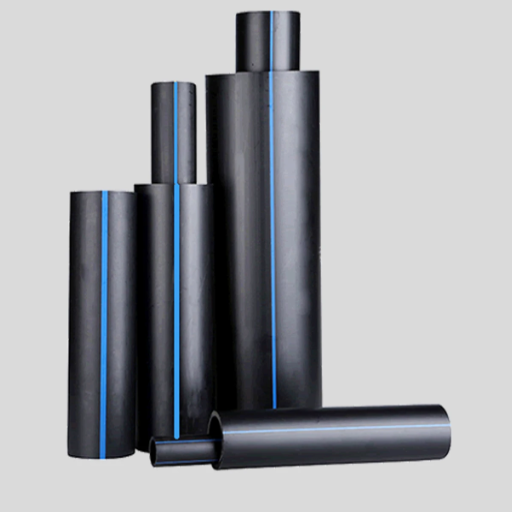
Recyclability of PVC and HDPE
The environmental impact and broader sustainability measures of PVC (Polyvinyl Chloride) and HDPE (High-Density Polyethylene) depend greatly on their recycling capacity. PVC, while technically recyclable, poses several problems mainly due to additives used in its manufacture, such as stabilizers and plasticizers that interfere with recycling. These additives vary widely in their composition, and sometimes advanced sorting met-techniques are required to achieve clean recycling streams. PVC recycling primarily relies on mechanical recycling, which progressively degrades the polymer whenever recycling procedures are carried out, thus limiting the further end-use of the recycled product.
Conversely, HDPE boasts superior recyclability characteristics mainly due to its simple polymeric structure with no requirement for additives. HDPE is largely recycled mechanically with near-perfect retention of properties and minimal material degradation, making possible repeated reuse in high-spec applications. According to instrumented data from the industry, in some regions at least 30% of HDPE is going into recycling, which surpasses the already impressive PVC recycling statistics. Among other things, recent progress in chemical recycling technologies is helping to advance closed-loop recycling for HDPE, where the polymer is chemically broken down into monomeric components and then re-polymerized into high-performance-grade polymers.
When comparing the two, the better recyclability of HDPE supposes a lower environmental lifecycle cost, in particular when embedded in a service system employing circular economy principles. Professionals in such industries as infrastructure, packaging, and construction have found HDPE increasingly attractive due to recyclability advantages, which conform with increasingly stringent global sustainability regulations.
Production Processes and Sustainability
High-Density Polyethylene is produced through the catalytic polymerization of ethylene, usually at low pressure, employing Ziegler-Natta or chromium. These methods try to keep polymer chains aligned, building a very crystalline structure, which gives HDPE its characteristic strength and chemical resistance. Technological developments in catalytic efficiency allow various manufacturing processes to consume less heat energy, and this noticeably contributes to the ongoing developments in the sustainability arena.
From a sustainability standpoint, the use of renewable feedstock sources such as bio-ethylene from sugarcane or other vegetable material has been gaining momentum in the industry. These innovations reduce dependency on fossil fuel-derived ethylene while conforming to carbon mitigation mechanisms by lowering net greenhouse gas emissions. Besides that, a closed-loop approach is gaining traction in HDPE production, where industrial scraps are redirected back into the production cycle, leading to better material utilization and less wastage.
This is accompanied by the emergence of state-of-the-art mechanical and chemical recycling technologies that can address post-consumer HDPE without losing much of its quality. The recycled HDPE is now able to re-enter the supply chain from applications in high-quality pipes to packaging materials, thus offering its first big contribution toward circular economy implementation.
By combining cutting-edge processing with sustainability, HDPE manufacturers will be equipped not only to meet stringent environmental regulations but also to contribute to long-term resource optimization and an environmental restoration endeavor.
Impact on the Environment
Conversely, the environmental consequences of HDPE recycling cannot be overemphasized in light of worldwide acceptance of avenues toward reduction in plastic pollution and a set of finite natural resources. By redeeming post-consumer HDPE wastes into a category of reusable materials, manufacturers save a great amount of plastic production from being undertaken, which means virgin plastic production is commercially energy-intensive and strongly dependent on fossil fuels. According to some studies, the utilization of recycled HDPE in a manufacturing process limits the generation of greenhouse gas emissions by almost 50% compared to their counterpart produced from virgin HDPE and, therefore, strengthens the climate change mitigation strategy.
The presence of advanced recycling and reprocessing infrastructures further enhanced the diversion of large volumes of HDPE from disposal in landfills and water bodies. This plastic waste may remain in landfills for hundreds of years without any degradation, while the improperly managed plastic residues end up in the marine environment, causing danger to aquatic ecosystems. The advanced HDPE recovery systems also contribute ideas to the issues by encouraging circularity, whereby the waste is used to make materials of high value rather than sending it away as garbage.
Moreover, integrated HDPE recycling helps in saving resources and reduces environmental pollution and degradation caused by the extraction activities of raw materials. The extraction and refinement of petroleum feedstocks required for virgin HDPE depletes the non-renewable resources while at the same time polluting and destroying habitats. When scaled, integrating recycled HDPE into supply chains can cause companies and policymakers to evolve a shift toward low-impact, resource-efficient manufacturing views, wherein this protects biodiversity and reduces industrial carbon footprints simultaneously. This, thus, places on record the criticality of innovation coupled with policy for scaling up sustainable practices.
Common Applications for PVC and HDPE Pipes
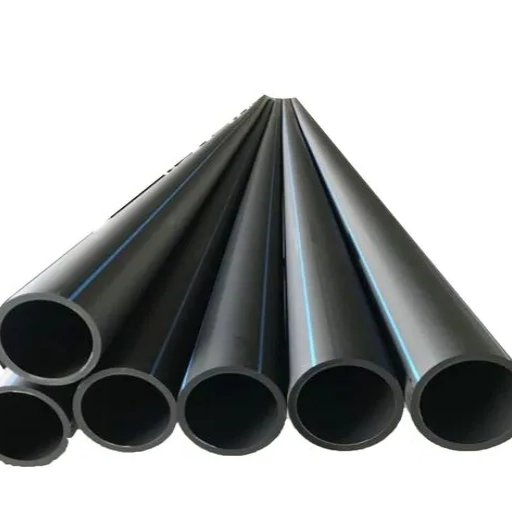
Plumbing Applications
PVC and HDPE pipes are maximized for plumbing jobs due to their superior durability, cost-effectiveness, and corrosion resistance. Following is an elaborate list of five typical plumbing applications in which these products have been applied predominantly:
- Residential Water Supply Systems: PVC and HDPE pipes are used extensively for potable water transmission at residential premises. Their smooth inner walls minimize friction loss in water flow. Pipes of HDPE are again preferred for underground water mains due to the flexibility they offer and the high external pressure resistance.
- Drainage and Sewer Systems: These pipes are ideal for wastewater management systems. Their chemical resistance ensures their longevity against corrosive effects found in sewage and drainage lines. PVC pipes are generally used for drainage systems both indoors and outdoors.
- Irrigation Systems: An important aspect of irrigation with PVC and HDPE pipes incorporates agricultural irrigation main lines to micro irrigation systems. HDPE is considered the best option for above-ground applications in fields and landscapes in terms of UV resistance and pressure resistance.
- Hot and Cold Water Distribution: PVC, or more precisely CPVC, is best suited for hot-and-cold water distribution as it can withstand higher temperatures. While the HDPE pipes are more suited for cold water, they are still a good choice for high-pressure systems.
- Industrial and Chemical Plumbing: HDPE and special PVC pipes find wide application in industries in transporting chemicals and non-potable liquids. Their corrosion resistance and strength make them indispensable for such applications in which they assure less leakage or pipe failure as time goes on.
To put it plainly, these applications speak of the cost-effectiveness and versatility of PVC and HDPE pipes, giving these materials a sure place in any modern plumbing system.
Irrigation Systems
Modern irrigation systems use advanced materials and technologies to achieve efficient water distribution and conservation. This sector is dominated by HDPE and PVC pipes due to their particular abrasion resistance, flexibility, environmental stress resistance, and chemical resistance properties. The HDPE type of pipe, due to its high tensile strength and pressure resistance, is most frequently used to carry water over long distances in agriculture. Moreover, PVC pipes being light in weight can be easily installed, thus saving on labour costs and installation time.
The latest advancements in irrigation methods, such as drip irrigation and sprinkler systems, further stress the aspect of material reliability. The systems require materials that will not degrade or leak under varying pressures and exposure to water. For example, drip irrigation systems, designed to waste very little water, often use PVC pipes to ensure that the pipes provide consistent flow rates.
According to data, the use of more efficient irrigation systems with components made from HDPE and PVC can reduce water usage by as much as 50%. Such a conservation includes the drought-prone areas.
References
Frequently Asked Questions (FAQ)
Q: What is the primary difference between PVC and HDPE pipes?
A: The primary difference between PVC and HDPE pipes lies in their material properties. PVC, or polyvinyl chloride, is a rigid plastic material often used in water and wastewater systems. In contrast, HDPE, or high-density polyethylene, is a thermoplastic that offers greater flexibility and resistance to impact, making it suitable for a variety of applications, including natural gas and oil and gas pipelines.
Q: What are the benefits of using HDPE pipes over PVC?
A: HDPE pipes offer several benefits compared to PVC, such as enhanced flexibility, allowing for a smaller bending radius and easier installation in tight spaces. Additionally, HDPE is known for its superior resistance to corrosion and chemicals, which can lead to a more durable and leak-free system in the long term.
Q: Can PVC piping handle higher pressure than HDPE?
A: Generally, PVC piping can handle higher pressure ratings than HDPE. This makes PVC a common choice for water distribution systems where high pressure is required. However, HDPE is often favored for its toughness and flexibility, especially in applications that require direct burial and trenchless installation methods.
Q: How do the physical properties of PVC and HDPE affect their usage?
A: The physical properties of PVC make it a stronger and stiffer material, which is ideal for structural applications. On the other hand, the flexibility of HDPE allows for better adaptability in various terrains and can reduce the risk of damage during installation. This contrast makes the choice between PVC and HDPE dependent on specific project requirements.
Q: What types of applications are best suited for HDPE pipes?
A: HDPE pipes are particularly well-suited for applications involving water and wastewater, as well as for HDPE suction lines in industrial settings. Their resistance to environmental stress and ability to withstand bending make them ideal for both municipal and agricultural uses.
Q: What are fusion joints, and how do they relate to HDPE pipes?
A: Fusion joints are a method of connecting HDPE pipes through heat fusion, creating a strong, leak-free system. This technique is crucial in the pipe industry, as it ensures that the joints are as strong as the pipe itself, enhancing the overall durability and reliability of the piping system.
Q: Is HDPE pipe more cost-effective than PVC in the long run?
A: While the initial cost of HDPE pipe may be higher than that of PVC, the long-term savings can be significant due to its durability, lower maintenance costs, and resistance to environmental factors. Hence, many projects find HDPE to be the better choice over time.
Q: How does installation differ between PVC and HDPE pipes?
A: Installation of PVC piping can be done using traditional methods, while HDPE piping often requires specialized techniques such as trenchless installation or direct burial. HDPE’s flexibility allows it to be installed in a variety of configurations, which can reduce disruption and cut costs during installation.



